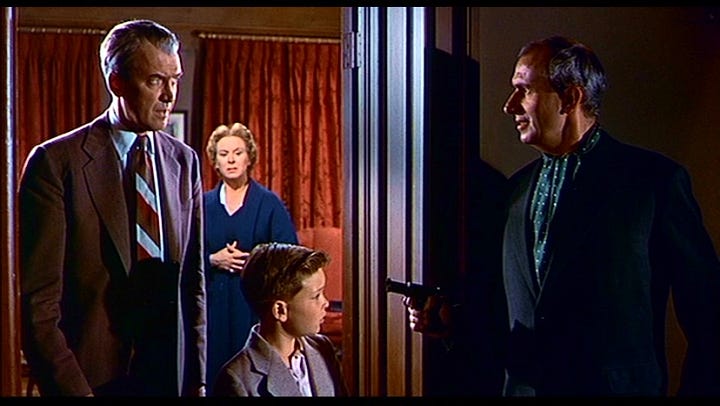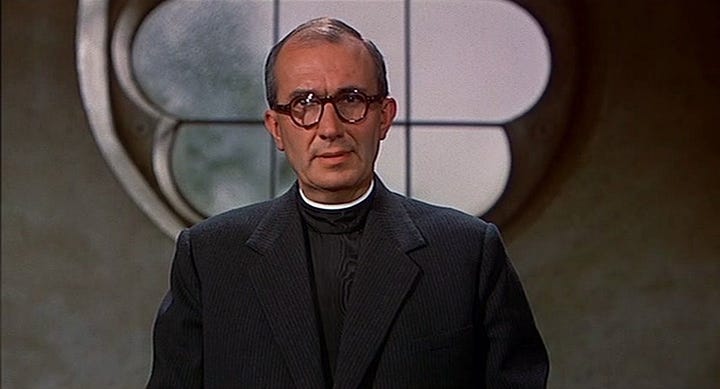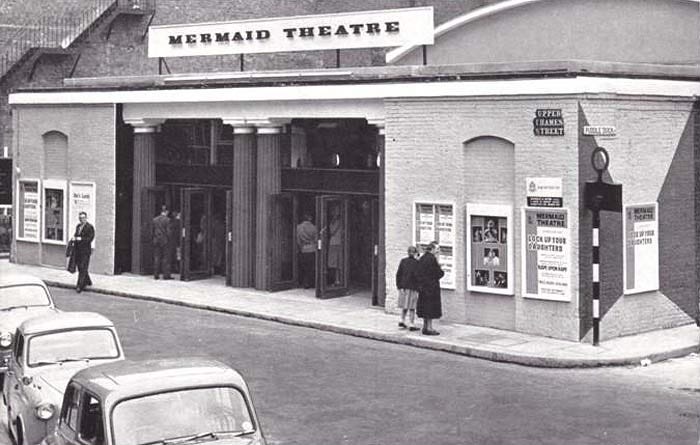Que Sera Sera… Science Fiction at the Mermaid
From interstellar intrigue to theatrical delight: A cosmic journey at London’s historic theatre.
While in Cambridge, it is not difficult to make a day-trip to London to see a movie or go for a theatre performance. In the 1950s “online” was unheard of but there were agencies that procured tickets for you. On one such visit I spotted the Hoyles at the Mermaid Theatre. They were chatting with a genial looking person whose face somehow seemed familiar.
“Meet our bright boy from India, Bernard… Jayant! You have just seen him on the screen”, said Barbara to me. And I realised why his face looked familiar. I was looking at the villain of the movie ‘The Man who knew too much’. The movie starring James Stewart and Doris Day had turned out to be a Hitchcock classic. One of its memorable features was the song “Que Sera Sera”. Meaning “whatever will be will be” it was the response of a mother to her growing daughter’s apprehensions about her future.
Bernard Miles had been a good friend of Fred Hoyle. As I later learnt from Barbara Hoyle, Bernard Miles was not only a good actor but he had also contributed to the cultural revival of London after the end of World War II. This included the renaissance of the Mermaid Theatre on the South Bank of River Thames.


There used to be a flourishing Mermaid Theatre here in Shakespeare’s time. Over the years it declined and perished. To restore its former glory was one of the aims of its present owner Bernard Miles. The new building incorporated the latest architectural norms. Even more importantly, the building would encourage the experimental theatre. One of his ideas for theatrical experiment was to have a science fiction play for schoolchildren at the Mermaid. When I met him in the vicinity of Mermaid he was trying to persuade Fred Hoyle to write such a story or play which could be shown in the Mermaid in the next Easter vacation.
The Black Cloud
Bernard Miles knew of the highly successful novel “The Black Cloud” written by Fred. Astronomers in the 1950s had evidence for the presence of neutral hydrogen in interstellar space. At the time Hoyle wrote a paper conjecturing that there may be clouds containing molecular gas and that they may be detected by special telescopes sensitive to radiation emitted at millimeter wavelengths. By and large the astronomical community ridiculed the idea and Hoyle found his paper rejected by leading astronomy and physics journals. The idea was not liked by the Establishment, which believed that no chemical structure beyond neutral hydrogen could form and survive in the very low density interstellar space.
When he encountered such resistance, Hoyle took what may be called a ‘diversionary’ action. He wrote a novel called The Black Cloud: a science fiction story wherein the notion of giant molecular clouds played a key role.
About a decade later, the millimeter wavelength telescopes began to contribute evidence confirming Hoyle’s conjecture. Apart from his very first venture in science fiction writing, Fred had written novels, short stories and plots for TV serials. Now, Bernard Miles was trying to get Fred to write a science fiction play for teenage school children. For, he had a highly original plan in mind!
Rockets in Ursa Major
A few weeks on, I was caught in my Cambridge routine, when postal delivery brought me a colourful pamphlet and a forwarding note. The latter said simply : ‘I started the programme at the start of Easter Vacation in schools and it is going well. But I very much look forward to your presence and comments. Please see the details attached. Will see you with Fred, Barbara and Liz…
Que sera sera…with greetings, –Bernard’
The details gave the date, time and pertinent information. Barbara had received similar information and we fixed the details of the day between us. The show was to begin at Mermaid 6pm and end at 8pm, followed by dinner in the theatre restaurant. A combined ticket for show + dinner was available at a reduced rate. (Of course we got it free as we were invited guests.)
There was a huge crowd mainly of school children with at least one guardian testifying to the success of the venture. Easter holidays in England can be of 4-6 weeks duration. Weather at that time being “uncertain” open air holiday activities are not as common as in the summer season. Thus theatre shows, cinema halls, exhibitions etc are more in demand. Additionally, the Mermaid show was advertised with great flair as the first ever science fiction show presented by a famous astronomer.
The theme of the story described how spaceships sent to explore life outside the Earth were lost except for one called DSP15. This space ship returned and was picked up by space scientists in Mildenhall, England. There was no living creature on it but a message scratched by its captain: “If this space ship returns to Earth, then mankind is in deadly peril…God help you”.
With this sinister beginning, the play started. The story combined adventure with some up-to-date ideas in stellar evolution leading to the end of a bright supergiant star called Betelgeuse in a supernova explosion. The star is normally seen in the night sky in the direction of the Ursa Major Constellation. The play itself was called ‘Rockets in Ursa Major’ and its main character was an extra terrestrial called ‘Betelgeuse the Buccaneer’. A humorous addition to the plot was provided by a take off on Harold Macmillan, the then (1962) Prime Minister of Great Britain.
There was audience participation too, adding to the informality of the occasion. I am sure, Bernard Miles felt that his foray into the future, “Que sera sera” got an overwhelmingly positive response. As for me, I realized that science fiction can be a good resource for getting the younger generation attracted to science. Later, when I was back in India, I would write science fiction stories in my mother tongue Marathi.
Although the ticket entitled us to the meal served in the Mermaid dining room, we did not avail of it as we had to catch a fast train to Cambridge. I had been wondering if we would get any food on arrival in Cambridge. “Que sera sera” I said to myself. I got the answer in due course! Bernard had asked us for the details of the train which we were taking out of King’s Cross Station. In due course the train rolled into the assigned platform. After we boarded it and settled down in an empty compartment, a messenger came looking for the Hoyles. He produced a rich hamper containing cold supper.
“Que Sera Sera!” I said to myself.



Enjoyed this! Reminded me of the Adventures of Captain Underpants series that was useful in hooking kids on science and getting excited about the future.
Enjoyed. as always